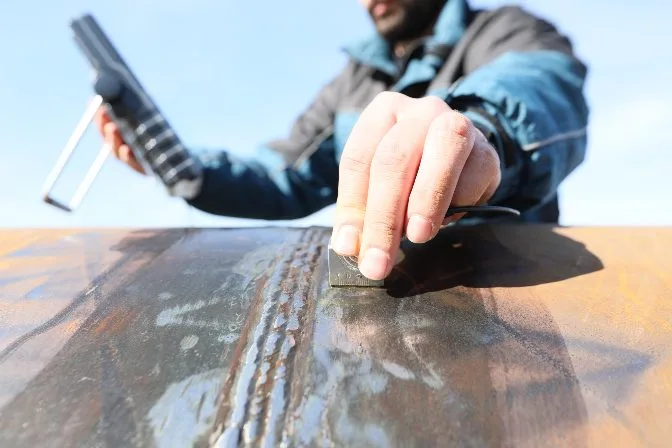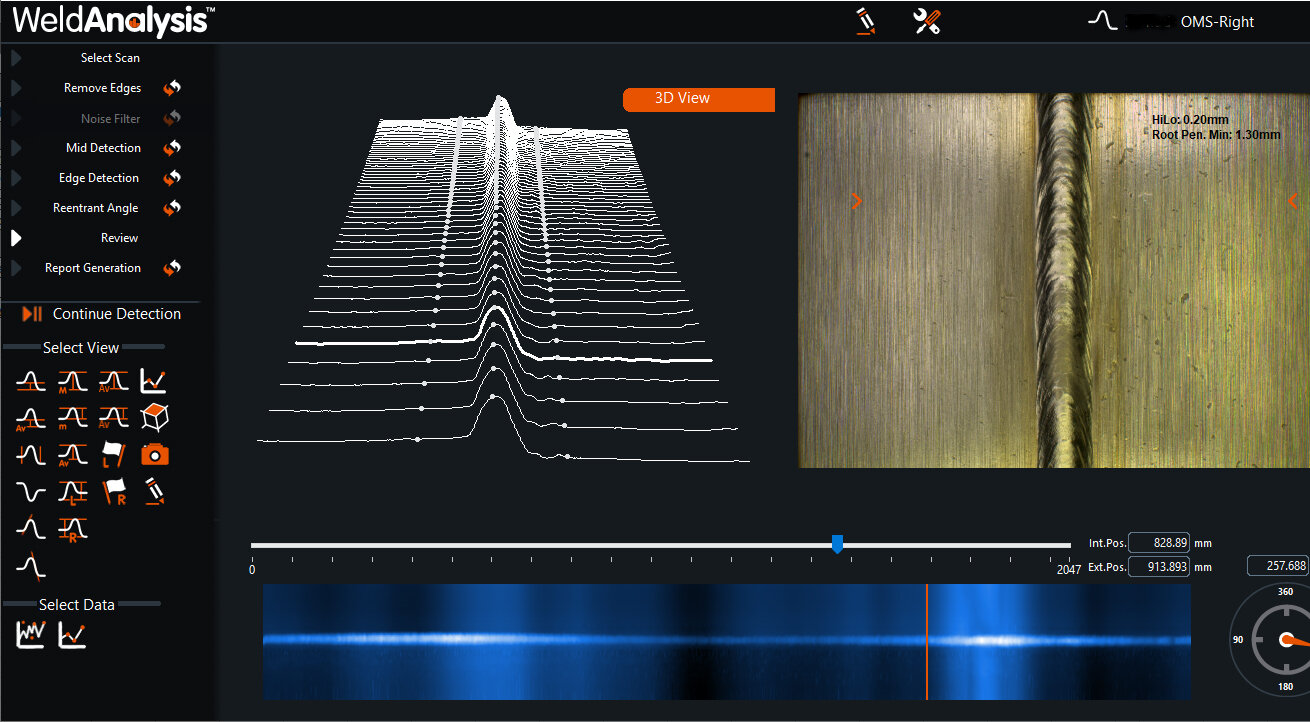Pipeline Welding Inspection: Guaranteeing Conformity with Market Standards
Pipeline Welding Inspection: Guaranteeing Conformity with Market Standards
Blog Article
Comprehensive Overview to Pipeline Welding Inspection: Ensuring Stability and Safety in Pipe Building and Upkeep
The integrity and safety of pipes are critical in today's facilities landscape, emphasizing the vital duty of welding examination in pipeline construction and upkeep. Pipeline Welding Inspection. The complexities involved in welding evaluation raising pertinent concerns regarding sector criteria and the advancing technologies that may redefine these methods.

Relevance of Welding Examination
Welding inspection plays a vital function in making sure the stability and security of pipe systems. It functions as an essential procedure that verifies the high quality and reliability of welded joints, which are often one of the most susceptible factors in pipeline construction. Through systematic assessment, examiners can identify possible issues such as fractures, porosity, and insufficient blend, which might jeopardize the structural integrity of the pipeline.
The importance of welding examination prolongs beyond mere compliance with sector requirements; it also safeguards public wellness and the setting. Pipelines carrying hazardous materials pose significant threats if failures take place. Reliable inspection procedures assist stop leaks and tears, alleviating environmental damages and protecting neighborhoods. Moreover, complete evaluations can boost the durability of pipe systems, decreasing the need for pricey repairs and downtime.
Along with making certain safety and compliance, welding examination fosters a culture of quality control within organizations. By prioritizing examination throughout the welding process, business can develop a reputation for dependability and quality, ultimately resulting in enhanced client confidence and company chances (Pipeline Welding Inspection). Therefore, the relevance of welding examination can not be overemphasized in the context of pipeline building and construction and maintenance
Key Welding Processes
Different welding processes are utilized in pipeline construction, each with its own advantages and applications. Among the most extensively utilized approaches are Secured Steel Arc Welding (SMAW), Gas Tungsten Arc Welding (GTAW), and Gas Metal Arc Welding (GMAW) SMAW is preferred for its versatility and ability to execute well in numerous ecological problems, making it ideal for field applications.
GTAW, frequently referred to as Tungsten Inert Gas (TIG) welding, is acknowledged for its capability to produce top notch welds with exceptional control over warmth input, making it optimal for thin-walled pipes and stainless steel materials. GMAW, or Metal Inert Gas (MIG) welding, provides high deposition rates and is effective for large projects, often used in the fabrication of pipes in regulated atmospheres.
Furthermore, Submerged Arc Welding (SAW) is made use of for its deep infiltration and high productivity, especially in the building and construction of large-diameter pipes. Each of these procedures contributes to the total stability and security of pipeline buildings, allowing welders to pick the most proper technique based on material kind, task requirements, and environmental problems. Recognizing these essential welding processes is essential for reliable pipe welding assessment.
Usual Flaws and Their Impact

Porosity, characterized by tiny gas pockets entraped within the weld, damages the product and can cause leakages. Cracks, which may happen because of thermal tensions or inappropriate cooling, can result and propagate in architectural failure under pressure. Damaging, where the base steel is worn down along the weld bead, reduces the reliable cross-section of the pipeline, increasing the threat of fracture.
Incomplete combination takes place when the weld steel does not effectively bond with the base steel, resulting in weak locations that may fall short under stress and anxiety. Slag addition, the entrapment of non-metallic material within the weld, can additionally compromise the joint's stability. Identifying and addressing these issues early in the building procedure is critical to making sure the long-term integrity and safety of pipe systems, therefore securing both the environment and the facilities.
Evaluation Devices and strategies

Visual examination is the initial line of protection, enabling assessors to determine surface area abnormalities, misalignment, or various other visible issues. Ultrasonic testing employs high-frequency acoustic waves to discover inner defects, giving precise deepness measurements and characterizing problems without harming the weld. Radiographic testing makes use of X-rays or gamma rays to create photos of the weld, allowing the recognition of internal gaps, cracks, or incorporations.
Magnetic particle screening is particularly efficient for spotting surface area check here and near-surface gaps in ferromagnetic products. This technique includes using an electromagnetic field and great iron particles to the weld, revealing defects through the buildup of particles at defect sites.
In enhancement to these strategies, specialized devices such helpful resources as automated ultrasonic screening devices and digital radiography systems improve inspection precision and effectiveness, making sure a complete evaluation of pipeline welds during building and maintenance.
Finest Practices for Conformity
Sticking to best techniques for compliance in pipe welding examination is important for ensuring the integrity and safety and security of the infrastructure. Organizations should develop a thorough top quality management system that straightens with industry standards such as ASME, API, and AWS. This includes developing comprehensive welding procedures that specify the materials, techniques, and qualifications needed for welders.
Routine training and accreditation of examination employees are vital to preserve high proficiency degrees. Assessors must know with numerous non-destructive screening (NDT) approaches, consisting of ultrasonic screening, radiographic testing, and visual evaluation, to successfully identify possible flaws.
Paperwork plays an important function in conformity; preserving accurate documents of examinations, weld procedures, and personnel certifications helps to make certain traceability and responsibility. Set up audits and evaluations of welding techniques must be conducted to recognize locations for renovation and guarantee adherence to established protocols.

Final Thought
In conclusion, the application of extensive welding assessment procedures is critical for ensuring the stability and safety of pipe building and upkeep. Constant renovation in evaluation procedures will certainly contribute to the durability and dependability of pipe systems, underscoring the crucial duty of welding inspection in the market.
The stability and safety of pipelines are paramount in today's facilities landscape, emphasizing the vital role of welding evaluation click to read more in pipe building and upkeep. Understanding these vital welding processes is necessary for reliable pipeline welding evaluation.
Sticking to best practices for conformity in pipe welding evaluation is important for guaranteeing the integrity and safety and security of the infrastructure.In verdict, the implementation of rigorous welding examination methods is extremely important for ensuring the integrity and security of pipeline construction and upkeep. Constant renovation in inspection processes will certainly contribute to the longevity and reliability of pipeline systems, emphasizing the critical role of welding examination in the sector.
Report this page